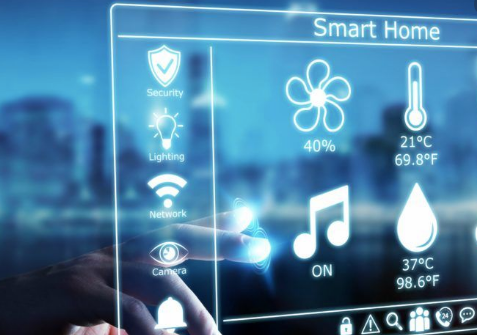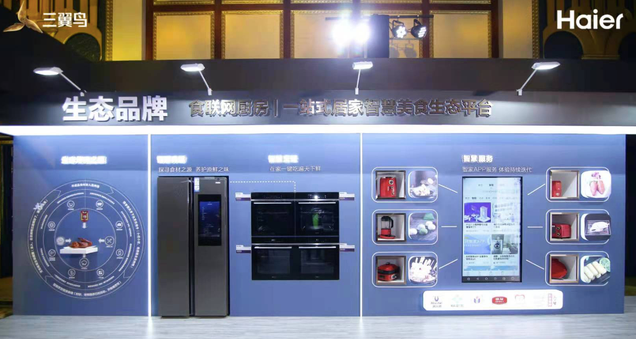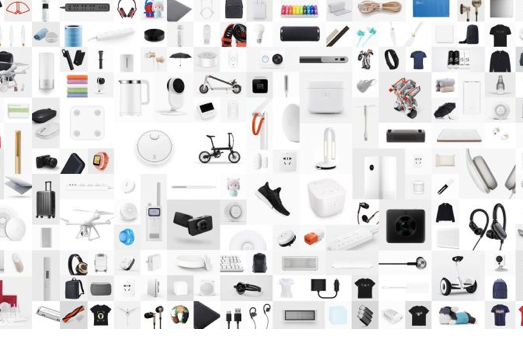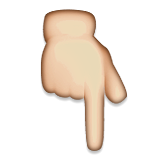 Produced by Internet Analysis SalonWritten by Dai Xihai Edited by HEThe AWE (China Household Appliances and Consumer Electronics Expo) is about to be held, and discussions about smart homes are heating up. When people talk about smart homes, they often confuse two concepts: point solutions and whole-house systems. Currently, point solutions represented by companies like Xiaomi and Huawei are selling well, while the popularization of whole-house smart home systems is still in the cultivation stage, and consumers have not yet formed a preference for smart consumption during home renovations.In fact, with the domestic AI technology capabilities, whole-house control systems are not difficult to achieve. The main issue lies in the lack of sufficient trust from consumers in the product capabilities of traditional manufacturers. Additionally, smart products from internet companies lack sufficient compatibility. From design, construction to product interconnection, smart home companies lack the ability to provide complete solutions, which has become the biggest bottleneck for industry development.Currently, the top tier of the smart home market, Huawei, Xiaomi, and Haier Smart Home, represent three different development directions, which are actually a path choice based on the companies’ own realities. So, in the process of breaking through the bottlenecks, who can bring more insights to the industry’s development?
Produced by Internet Analysis SalonWritten by Dai Xihai Edited by HEThe AWE (China Household Appliances and Consumer Electronics Expo) is about to be held, and discussions about smart homes are heating up. When people talk about smart homes, they often confuse two concepts: point solutions and whole-house systems. Currently, point solutions represented by companies like Xiaomi and Huawei are selling well, while the popularization of whole-house smart home systems is still in the cultivation stage, and consumers have not yet formed a preference for smart consumption during home renovations.In fact, with the domestic AI technology capabilities, whole-house control systems are not difficult to achieve. The main issue lies in the lack of sufficient trust from consumers in the product capabilities of traditional manufacturers. Additionally, smart products from internet companies lack sufficient compatibility. From design, construction to product interconnection, smart home companies lack the ability to provide complete solutions, which has become the biggest bottleneck for industry development.Currently, the top tier of the smart home market, Huawei, Xiaomi, and Haier Smart Home, represent three different development directions, which are actually a path choice based on the companies’ own realities. So, in the process of breaking through the bottlenecks, who can bring more insights to the industry’s development? 
01
Huawei: Transforming into Whole-House IntelligenceThe advantage of Huawei’s smart home lies in its underlying connections, using AI speakers, smart screens, routers, and smartphones as entry points, and building an ecosystem centered around the HiLink platform. Not only do smartphones have fast communication capabilities, but products like routers and optical network terminals also fully reflect this gene. For example, Huawei launched the world’s first integrated AI function (eAI) ONT (Optical Network Terminal) series product, OptiXstar V864 / K654. These products support GPON / XGS PON gigabit access, intelligent service type recognition, Wi-Fi 6 acceleration, and mesh home Wi-Fi coverage, providing smart home users with a brand new ultra-fast experience.It is worth noting that Huawei also launched a new smart home brand this year – Huawei Smart Selection, which is seen as an upgrade of Huawei’s previous smart ecosystem HiLink, and through smart home experience centers, fully showcases the “Huawei Whole-House Smart Experience Framework 1.0”. It can be seen that Huawei’s smart home business will focus on whole-house smart solutions in the coming period.  From self-developed systems to ecological devices, and then to terminal experiences, Huawei is beginning to fill its gaps in the smart home field. Although the Honor brand has been spun off, which may result in the loss of an important control entry point, Huawei’s product matrix remains strong and will not be significantly affected.Huawei has a significant advantage in home and commercial security, and the combination of security + whole-house intelligence is very attractive to consumers.
From self-developed systems to ecological devices, and then to terminal experiences, Huawei is beginning to fill its gaps in the smart home field. Although the Honor brand has been spun off, which may result in the loss of an important control entry point, Huawei’s product matrix remains strong and will not be significantly affected.Huawei has a significant advantage in home and commercial security, and the combination of security + whole-house intelligence is very attractive to consumers.
02
Haier Smart Home: The Three-Winged Bird Flies into Every HouseholdIn the smart home field, Haier Smart Home’s Three-Winged Bird scenario brand, launched last September, is worth mentioning. It provides users with large-scale scenario customization solutions such as smart balconies, smart kitchens, smart bedrooms, and smart living rooms. For some, the Three-Winged Bird is still a “concept,” but it has already begun to be tested in the market: currently, nearly 1,000 smart home experience stores have been established nationwide, with the highest average customer order price reaching 220,000 yuan, which is something traditional stores find hard to achieve.In recent years, Haier Smart Home has accelerated its transformation into the Internet of Things, and its family scene smart solutions built around home appliances are evidently more attractive compared to traditional manufacturers. Large appliances achieving smart interconnectivity are closely related to users’ daily consumption behaviors, unlike small products. Therefore, the Three-Winged Bird extends its solutions to the source, from procurement, delivery to production, cleaning, and entertainment, allowing users to complete orders with one click.  The reason the Three-Winged Bird can provide a deep smart home experience is due to Haier Smart Home’s years of layout in the digital platform. Currently, the Haier Smart Home Experience Cloud platform gathers various developers and customer ecological resources, with the advantage that all of users’ smart living needs can seek resources and access based on this platform, forming complete customized solutions and services. In comparison, Haier Smart Home’s popularization of smart home system solutions is still worth looking forward to. However, on the other hand, the Three-Winged Bird is still a brand new brand, and more investment is needed in brand building and influence.
The reason the Three-Winged Bird can provide a deep smart home experience is due to Haier Smart Home’s years of layout in the digital platform. Currently, the Haier Smart Home Experience Cloud platform gathers various developers and customer ecological resources, with the advantage that all of users’ smart living needs can seek resources and access based on this platform, forming complete customized solutions and services. In comparison, Haier Smart Home’s popularization of smart home system solutions is still worth looking forward to. However, on the other hand, the Three-Winged Bird is still a brand new brand, and more investment is needed in brand building and influence.
03
Xiaomi: Cost-Effectiveness Remains the Main DirectionXiaomi has built a sizable IoT platform through its ecological chain enterprises, implanting AI assistant Xiao Ai, making Xiaomi smart speakers a “star product.” Xiaomi’s product ecosystem covers a wide range and is cost-effective, gradually linking its ecological chain, creating a rich product matrix around user needs.In terms of product pricing, it still focuses on high cost-performance products. So far, Xiaomi has launched various small smart products as well as four types of internet kitchen and bathroom products, including refrigerators, washing machines, and range hoods. Objectively speaking, Xiaomi has achieved smart interconnectivity based on the Xiao Ai speaker control, but it is merely functional interconnectivity, and the options for kitchen and bathroom appliances are relatively limited, clearly more suitable for users who want to try new things.  As internet giants and home appliance manufacturers gradually transform into scenario solution providers, the service shortcomings of smart homes will soon be addressed, significantly lowering the threshold for smart home popularization. However, in my view, under this premise, for smart homes to truly enter the public, breakthroughs should be made in these three aspects:First is to seize the mental entry point; domestic smart home brands have rarely seen “blockbuster” products in marketing, making it difficult for the public to quickly associate a brand with their memories. In fact, this absence provides a rare opportunity. From the current marketing feedback, relying on Haier Smart Home’s brand advantage, the full-scenario solutions provided by the Three-Winged Bird have already gained a certain influence in a short time, and quickly seizing consumers’ mental entry point will be crucial.Second is to focus on scenario marketing; for smart home products, the scenarios created by smart interconnectivity are the focal point of consumer attention. As consumers become increasingly “lazy,” how much convenience can smart homes provide? These all need to be continuously influenced by scenario marketing on users’ consumption choices; furthermore, emphasis should be placed on creating new offline experiences, as offline stores are the direct carriers of scenario marketing and a key part of user consumption decisions. Whether offline can provide a new experience and offer users different feelings will be a new competitive weapon in the era of traffic.
As internet giants and home appliance manufacturers gradually transform into scenario solution providers, the service shortcomings of smart homes will soon be addressed, significantly lowering the threshold for smart home popularization. However, in my view, under this premise, for smart homes to truly enter the public, breakthroughs should be made in these three aspects:First is to seize the mental entry point; domestic smart home brands have rarely seen “blockbuster” products in marketing, making it difficult for the public to quickly associate a brand with their memories. In fact, this absence provides a rare opportunity. From the current marketing feedback, relying on Haier Smart Home’s brand advantage, the full-scenario solutions provided by the Three-Winged Bird have already gained a certain influence in a short time, and quickly seizing consumers’ mental entry point will be crucial.Second is to focus on scenario marketing; for smart home products, the scenarios created by smart interconnectivity are the focal point of consumer attention. As consumers become increasingly “lazy,” how much convenience can smart homes provide? These all need to be continuously influenced by scenario marketing on users’ consumption choices; furthermore, emphasis should be placed on creating new offline experiences, as offline stores are the direct carriers of scenario marketing and a key part of user consumption decisions. Whether offline can provide a new experience and offer users different feelings will be a new competitive weapon in the era of traffic.  In Conclusion:The Chinese smart home industry has already passed the stages of industry germination and cultivation. Internet companies have become relatively mature in system and product construction, traditional home manufacturers are upgrading intelligently based on manufacturing advantages, and real estate developers have completed the construction of smart community samples. It can be said that the smart home industry has completed quantitative accumulation and is about to enter a qualitative explosion. It precisely requires companies like Haier Smart Home to have the advantages of effectively matching online and offline, consumer chains and industrial chains, with greater investment, long-term patience, and a broader vision to truly bring smart homes into the households of the masses.Note:This article is based on publicly available information and is for informational exchange only, not constituting any investment advice.Images in the article are sourced from the internet; if there are any issues, please contact us for removal.
In Conclusion:The Chinese smart home industry has already passed the stages of industry germination and cultivation. Internet companies have become relatively mature in system and product construction, traditional home manufacturers are upgrading intelligently based on manufacturing advantages, and real estate developers have completed the construction of smart community samples. It can be said that the smart home industry has completed quantitative accumulation and is about to enter a qualitative explosion. It precisely requires companies like Haier Smart Home to have the advantages of effectively matching online and offline, consumer chains and industrial chains, with greater investment, long-term patience, and a broader vision to truly bring smart homes into the households of the masses.Note:This article is based on publicly available information and is for informational exchange only, not constituting any investment advice.Images in the article are sourced from the internet; if there are any issues, please contact us for removal.
END
Account Introduction
Internet Analysis Salon: One of the earliest technology self-media in China, focusing on in-depth industry analysis and the latest trend observations, with a total of 2.1 million followers on WeChat/Weibo.
Dai Xihai: Co-founder of Internet Analysis Salon and senior public relations expert, previously worked at well-known internet companies such as 360. Column articles are simultaneously published on dozens of media outlets including Toutiao, Sina, TMTPost, Interface, Xueqiu, Yidian Zixun, and Sohu.
Welcome to communicate and cooperate, QQ number: 2741164797 WeChat ID: daixihai
Welcome to share, like, and follow, a triple hit